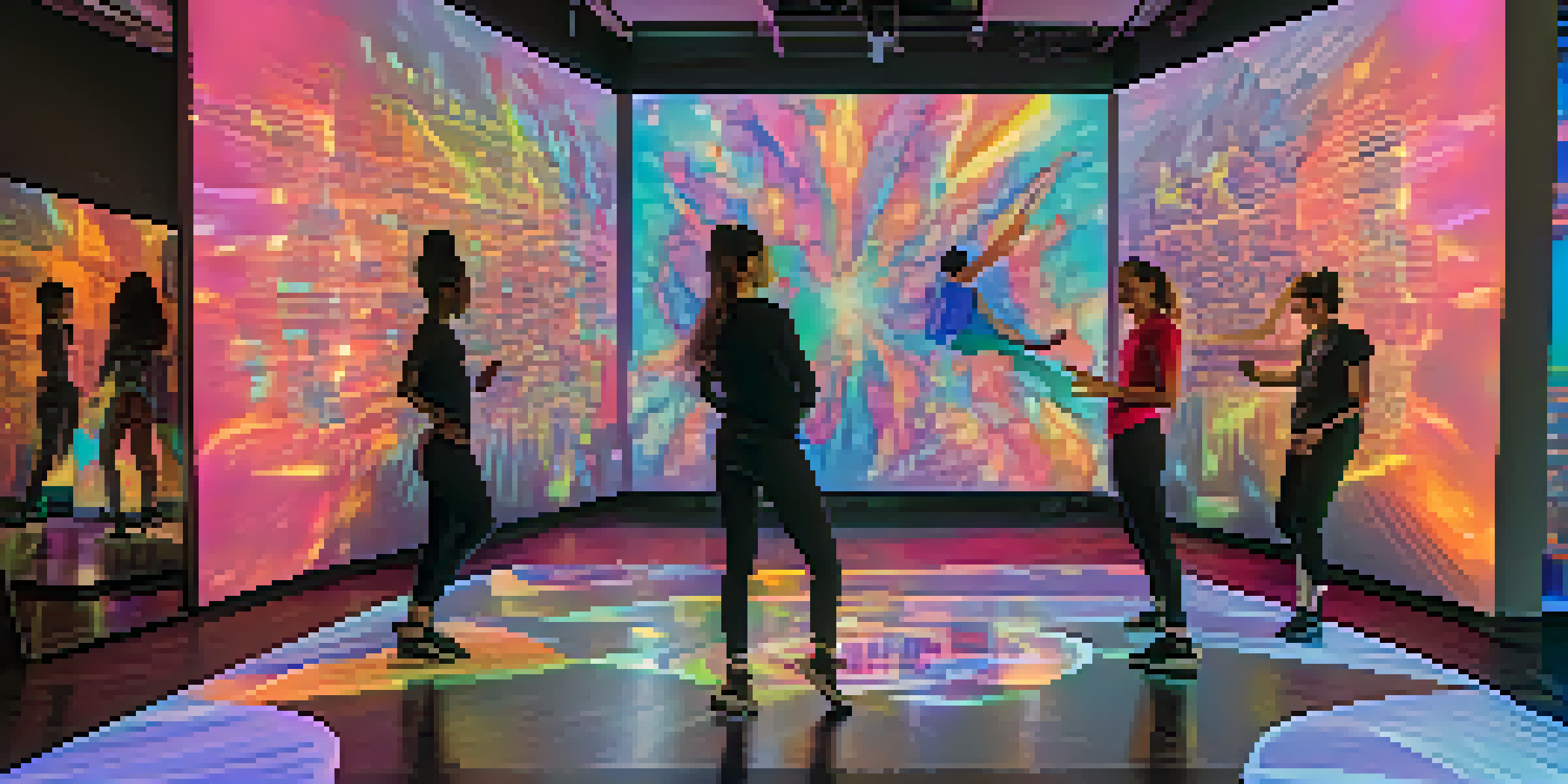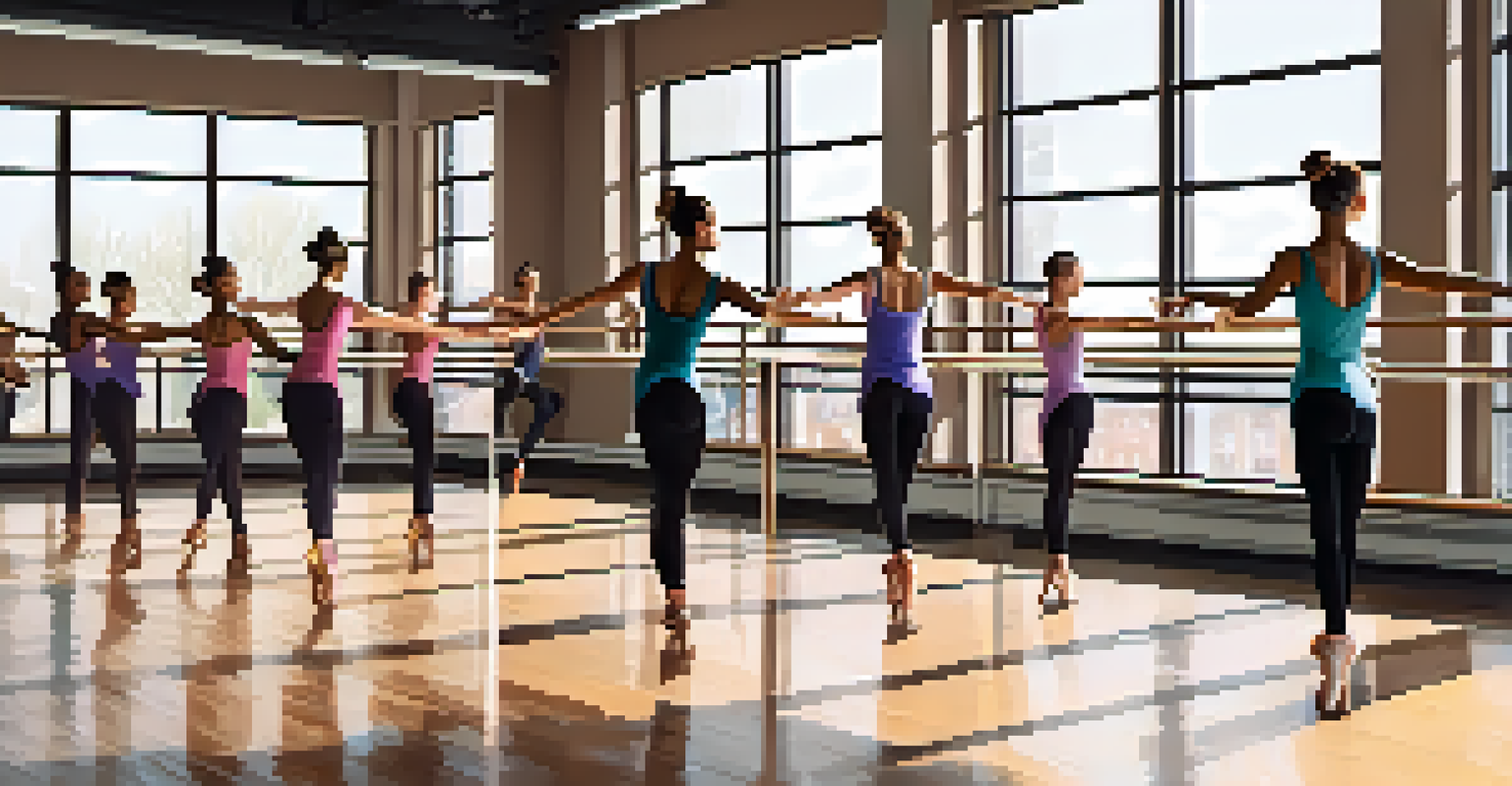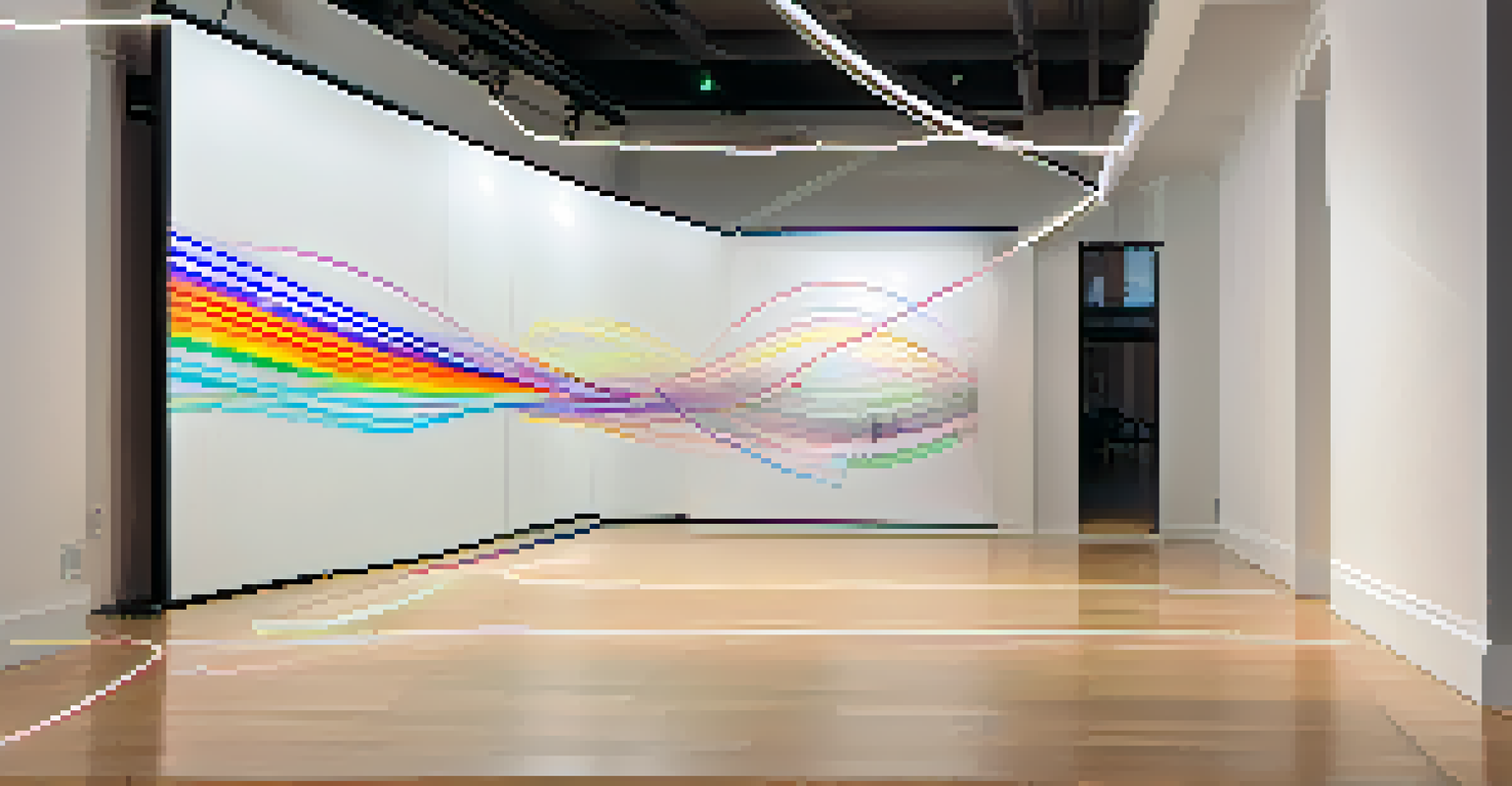Choreography Software: Tools for Modern Dance Creators

Understanding Choreography Software and Its Benefits
Choreography software has revolutionized how dance creators bring their ideas to life. Instead of relying solely on pen and paper, modern tools allow choreographers to visualize movements and structure performances more effectively. This not only saves time but also enhances creativity, as artists can experiment with various formations and transitions.
Choreography is the art of movement, and it’s essential to see it before you can create it.
For instance, imagine a choreographer who wants to create a complex dance sequence for a group of dancers. With choreography software, they can easily manipulate digital avatars to see how different movements flow together, enabling them to refine their vision before stepping into the studio.
Moreover, these tools often provide features like video recording, music synchronization, and even collaboration options, making it easier for teams to work together, regardless of their physical location. With technology at their fingertips, dance creators can focus more on the art of movement.
Key Features of Choreography Software
When choosing choreography software, it's essential to consider the features that align with your creative process. Most software offers a combination of visualization tools, notation options, and the ability to create detailed motion paths. This means you can not only see how dancers will move but also document those movements for future reference.

For example, some programs allow users to overlay video recordings of dancers performing over their digital sketches. This feature helps choreographers assess and adjust movements in real-time, creating a more efficient rehearsal process. It's like having a virtual rehearsal space right on your computer.
Choreography Software Boosts Creativity
Modern choreography tools allow creators to visualize and refine dance movements, enhancing creativity and saving time.
Additionally, many platforms boast features that enable seamless integration with music and sound design, which is crucial for syncing movements with beats. This holistic approach can significantly enhance the overall impact of a performance, ensuring that every beat and movement feels intentional.
Popular Choreography Software Options
There are several choreography software options on the market, each catering to different needs and preferences. Programs like DanceForms and ChoreoPlus are widely recognized for their user-friendly interfaces and comprehensive features. They allow users to create, edit, and share choreography easily, making them favorites among both amateur and professional choreographers.
The best way to predict the future is to create it.
In contrast, software like LabanWriter focuses on dance notation, providing tools for documenting movements in a more traditional way. This can be incredibly beneficial for choreographers wanting to preserve their work for future generations or those who prefer a more structured approach to their creative process.
For those looking for something more collaborative, platforms like Frame.io allow choreographers to share their work with dancers and receive feedback instantly. This flexibility ensures that the creative process remains dynamic and inclusive, fostering a sense of teamwork among all involved.
How Choreography Software Enhances Collaboration
Collaboration is key in the dance world, and choreography software significantly enhances this aspect. By providing a centralized platform for sharing ideas, choreographers can work closely with dancers and other creatives, regardless of where they are located. This means that geographical barriers are no longer a hindrance to the creative process.
For example, a choreographer in New York can easily collaborate with dancers in Los Angeles by using software that allows for real-time feedback and adjustments. This can lead to a richer, more diverse creative input, as different perspectives come together to shape the final performance.
Key Features Facilitate Collaboration
Choreography software offers integrated features for real-time feedback and cloud storage, making collaboration seamless across distances.
Additionally, many programs offer cloud storage options, ensuring that all collaborators have access to the latest versions of the choreography. This level of transparency and accessibility not only streamlines the workflow but also fosters a sense of shared ownership over the creative project.
The Role of Visualization in Choreography
Visualization is a powerful tool in choreography, and modern software enhances this aspect dramatically. By allowing choreographers to see movements in a virtual space, these tools help identify potential challenges before they arise in rehearsal. This foresight can save countless hours of adjustments later on.
Imagine a choreographer trying to create a large ensemble piece. With software, they can visualize how each dancer will fit into the formation, ensuring that everyone has their space and that the movements complement one another effectively. This level of planning can transform a chaotic rehearsal into a smooth and productive session.
Moreover, the ability to experiment with different visual layouts encourages creativity. Choreographers can play around with formations and transitions, discovering new possibilities that may not have been evident on the studio floor. This freedom to explore can lead to innovative choreography that captivates audiences.
Integrating Music with Choreography Software
Music plays an integral role in dance, and choreography software often includes features that allow seamless integration of soundtracks. This integration can help choreographers sync movements to the rhythm and beats of the music, creating a cohesive performance that resonates with audiences. Think of it as the heartbeat of the dance; without it, the movements can feel disjointed.
For example, many software programs allow users to import audio files directly, enabling choreographers to choreograph in real-time as they listen to their chosen piece. This immediate feedback loop can inspire spontaneous ideas and adjustments, leading to a more organic creation process.
Music Integration Elevates Performance
The ability to sync movements with music in choreography software results in cohesive performances that resonate deeply with audiences.
Additionally, some software provides tools for editing music clips, making it easy to create the perfect soundtrack for a performance. This means choreographers can experiment with different musical layers and arrangements, ensuring that every moment in the dance aligns beautifully with the accompanying sound.
Tips for Choosing the Right Choreography Software
Selecting the right choreography software can feel overwhelming with so many options available. Start by assessing your specific needs—do you prioritize collaboration, notation, or visualization? Knowing what you want to achieve will help narrow down your options and find a tool that aligns with your creative vision.
Additionally, consider the user interface of the software. A program that is intuitive and easy to navigate will save you time and frustration, allowing you to focus on what matters most: the choreography itself. Reading reviews or trying out demo versions can provide valuable insight into how user-friendly a particular software is.

Lastly, don't forget about customer support and community resources. A strong support system can make a significant difference, especially if you encounter technical challenges or need guidance on using specific features. Ultimately, the right software should feel like an extension of your creative process, enhancing rather than hindering your artistic expression.